
eLearning | Computer Based Training | Systems Simulation
Sphaera has expertise in the design of interactive CBT courseware and elearning covering gas turbine engines for both commercial and military aircraft.
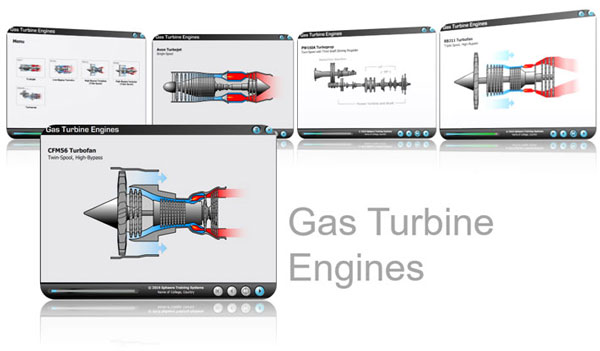
For example, the package described on this page contains clear schematic diagrams of 5 different gas turbine engines that can be built-up in a series of easy to understand steps to form the basis for many important introductory lessons to gas turbine engines such as discussing the purpose of each section of the engine or each phase of the Brayton cycle (induction, compression, combustion and exhaust):

The engines below provide good examples of a turbojet, turboprop and different types of turbofans (low-bypass, high-bypass, twin-spool and multi-spool) therefore developing the students' appreciation of the different approaches to engine design:
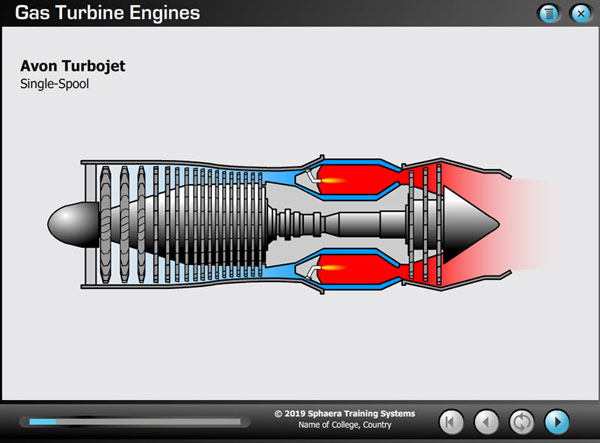
The turbojet was the first type of jet engine developed and the Avon is a good example. Introduced in 1950 it was used as the powerplant for many well-known military aircraft such as the English Electric Lightning, Hawker Hunter and Saab 35 Draken.
In a turbojet all the air passes through the core engine (with no bypass) where it is compressed and ignited to provide all the thrust when it exits the rear of the engine in the form of a high-velocity jet. As turbojets are noisy and are not the most fuel efficient of turbine engine types, they are not suitable for use on airliners but ideal for high altitude, high speed flight.
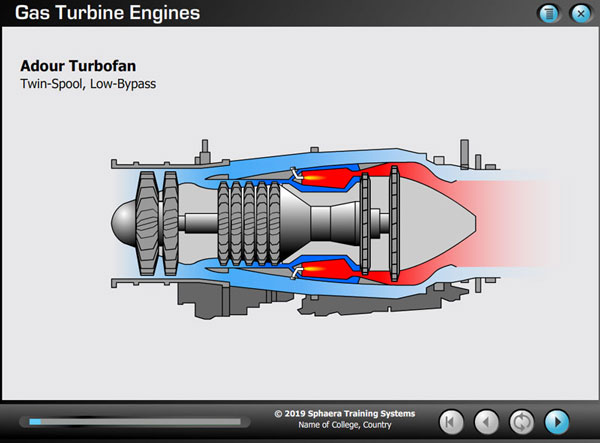
In a turbofan, some of the air is diverted around the core of the engine to provide additional thrust. In comparison to turbojets, this reduces noise and increases fuel efficiency.
Turbofan engines are generally classified as either low-bypass or high-bypass. Some low-bypass turbofan engines are used in speed ranges associated with military aircraft (above Mach 0.8) and the Adour is a good example. It provides propulsion for the many variations of the Hawk and also the SEPECAT Jaguar.
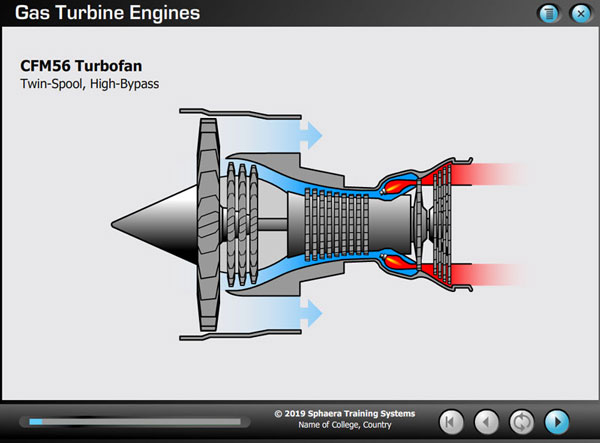
Almost all large passenger aircraft use high-bypass turbofan engines, which have a large fan at the front of the engine which produce about 80 percent of the thrust. This results in reduced noise and better fuel consumption for the speed range associated with passenger aircraft.
Like most turbofan engines, the CFM56 is a twin-spool design. The first spool, known as the low-pressure (LP) spool, features a fan and three-stage low-pressure compressor (LPC) driven by a four-stage low-pressure turbine (LPT). The second spool, known as the high-pressure (HP) spool, supplies HP air to the combustion section of the engine and features a nine-stage high-pressure compressor (HPC) driven by a single-stage high-pressure turbine (HPT).
The CFM56 is used to power the Boeing 737, the Airbus A320 family (A318, A319, A320 and A321) and Airbus A340.
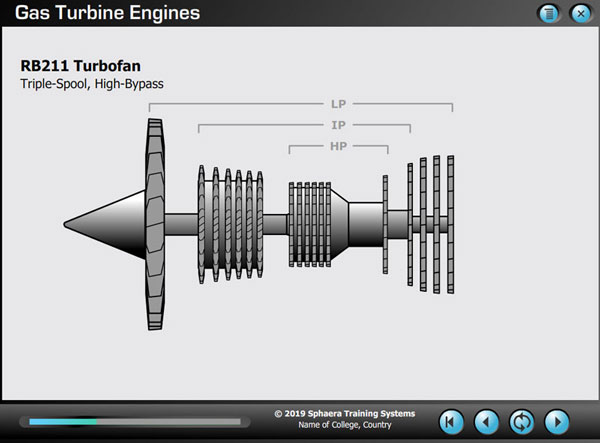
The RB211 is included as a good example of a multiple-spool turbofan. It is a triple-spool design featuring the usual LP and HP spools with an additional intermediate-pressure (IP) spool.
The RB211 was the first production triple-spool engine, entering service on the Lockheed TriStar and powering the Boeing 747, 757 and 767. It has since developed into the Trent family of engines.
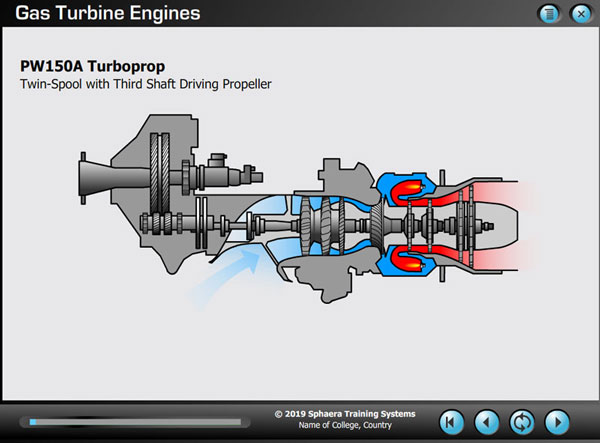
The selected example of a turboprop is the PW150A from the Bombardier Dash-8 Q400.
This engine features a low-pressure (LP) spool and a high-pressure (HP) spool with centrifugal compressor, but, as this is a turboprop design it has additional stages to extract as much of the gas energy as possible and turn a propeller. On this engine this is a two-stage power turbine driving a third shaft connected to the propeller through a reduction gearbox.
If you wish to use any of our CBT within your training school, or require any bespoke gas turbine training material to be created, simply contact us!